Winter is the perfect time to experiment with different squash types. You can find many different types at the grocery store or farmer's markets in the fall and winter - each with unique flavor profiles, colors, and uses.
Squash is dense, intensely flavorful, and incredibly versatile. You can blend them and use them in baked goods (like pies, bread, and cookies), roast them for a side dish, or add them to soups and salads.
I will share types of commonly available squash that you can find at the grocery store or farmer's market. This list doesn't include summer squashes, but we have a couple of guides with recipe ideas for zucchini and recipe ideas for yellow squash.
Here's a list of 12 of the most common types of winter squash and how to use them in your kitchen.
Jump to:
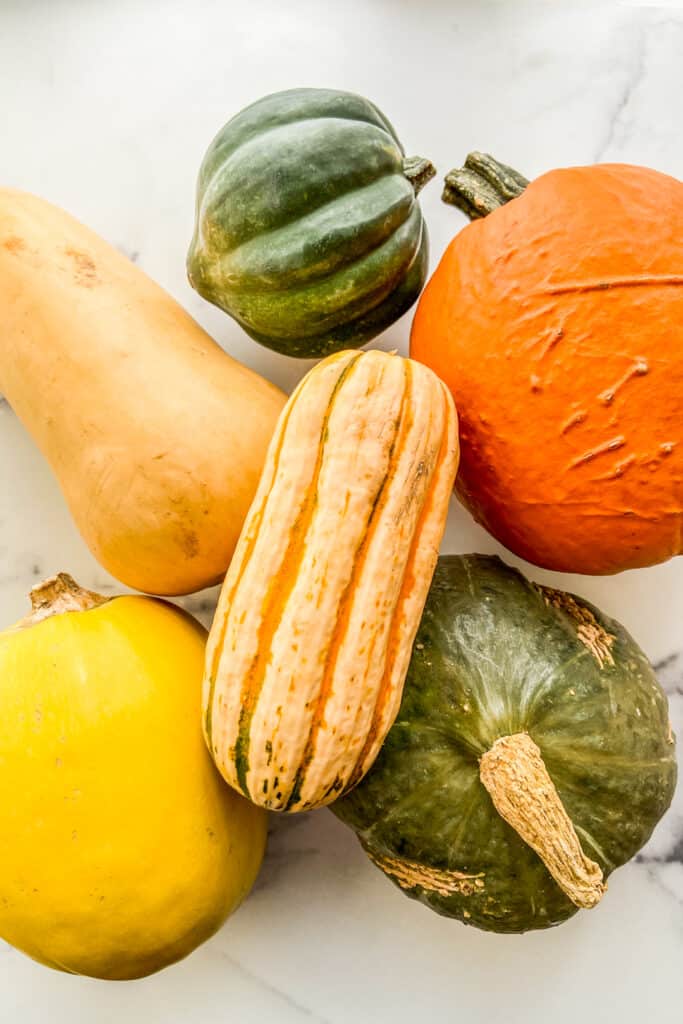
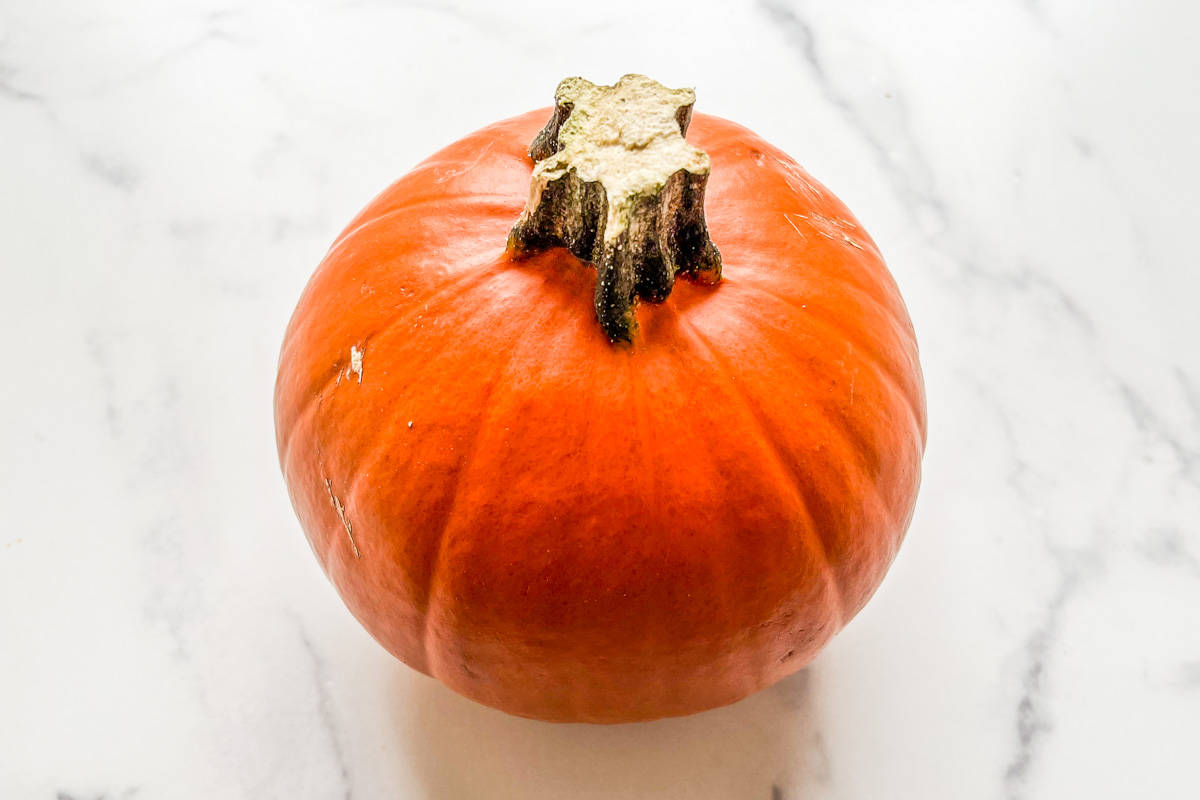
Sugar Pumpkin
Sugar pumpkin (also called pie pumpkin and sweet pumpkin) is probably the most popular of the winter squash types. We use it in pumpkin pie, pureed pumpkin, and pumpkin soup.
They're globe-shaped and have bright orange skin with bright orange flesh. They're smaller and sweeter than the pumpkins we use for decorations and jack-o-lanterns.
Sugar pumpkins have a rich, buttery flavor and flesh that can be roasted to a smooth texture. Like all squash, it has a dense texture.
Butternut squash can be used as a substitute for the sugar pumpkin. Many companies that sell canned pumpkin puree use butternut squash or a hybrid instead of sugar pumpkins.
It's simple to roast and puree your own sugar pumpkin. You can do so by cutting the pumpkin in half, scooping out the seeds, adding a little oil to the flesh, and roasting flesh side down on a baking sheet for about 45 minutes (or until fork tender) at 400 degrees F. Then, add the cooked pumpkin (minus the skin) to your blender or food processor until smooth.
Try using sugar pumpkin in these recipes, and don't be afraid to make your own puree!
- Pumpkin minestrone soup
- Marbled chocolate pumpkin bread
- Healthy pumpkin pie
- Pumpkin spice latte
- Healthier pumpkin spice cookies
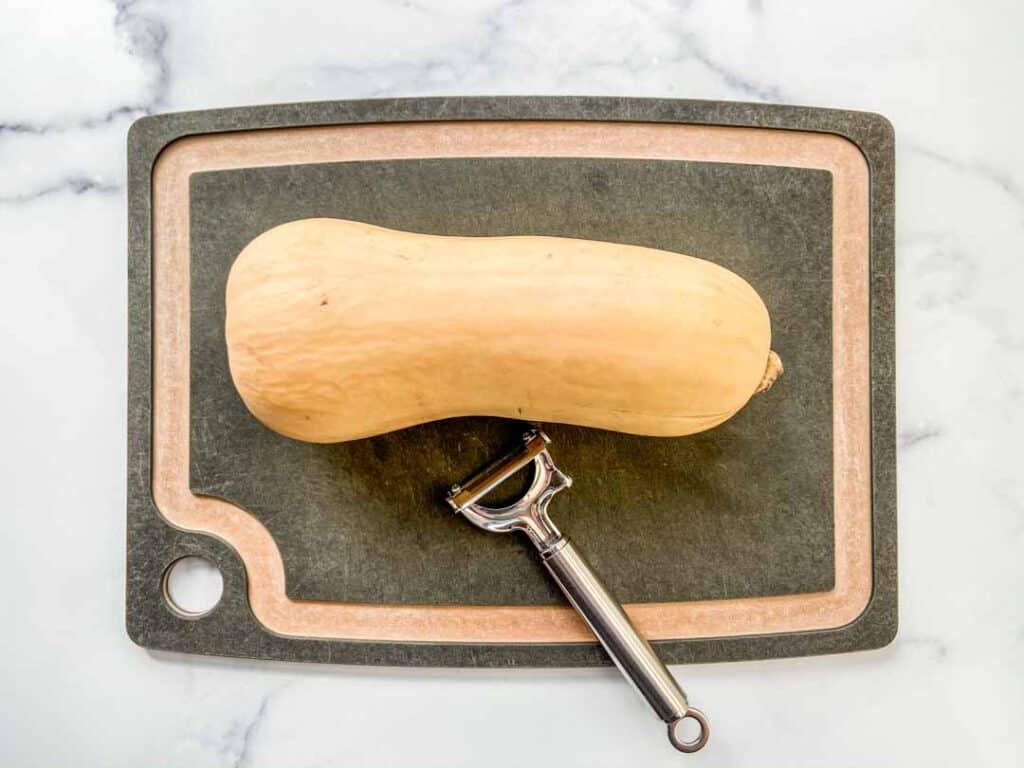
Butternut Squash
Butternut squash is a popular winter squash with a rich, sweet, nutty flavor and deeply colored orange flesh. Butternut squash are long and have a bulbous end with a more slender top.
It's like pumpkin and can be used in sweet and savory recipes. It can be used in soups, salads, baked goods, casseroles, pies, or as a side dish.
It's often used interchangeably with pumpkin and many popular canned pumpkin purees are butternut squash.
Butternut squash skin is typically peeled, the squash is halved, and the seeds scooped out. Technically, you can eat the squash skin, but butternut squash is better without the skin.
Use butternut squash in some of these delicious recipes:
- Butternut squash feta pasta
- Za'atar roasted butternut squash
- Butternut squash soup
- Butternut squash macaroni and cheese
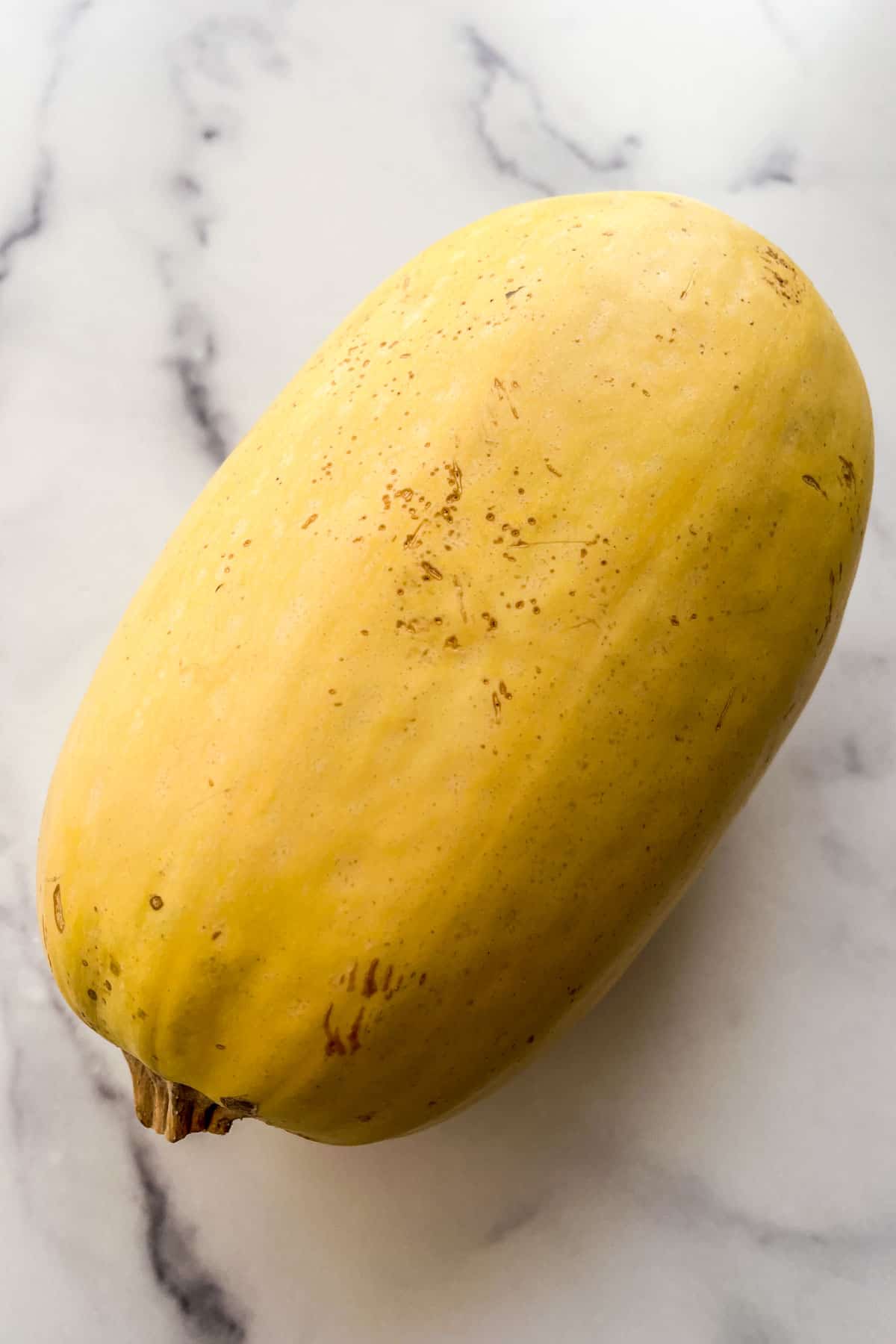
Spaghetti Squash
Spaghetti squash is an unusual, oblong winter squash with stringy flesh. It's popular because when it's roasted or steamed, you can pull the strands apart to create a squash noodle that resembles spaghetti.
Spaghetti squash comes in various colors - they're often yellow, but the skin may also be ivory or orange.
Spaghetti squash has a mellow, slightly sweet flavor. The mild flavor makes it a great accompaniment to strong flavors like meat and sauces - especially this pasta sauce made from fresh tomatoes.
Here's how to roast spaghetti squash in the oven to get nice long noodles. Or if cutting a raw spaghetti squash sounds scary, we figured out you can also roast a spaghetti squash whole.
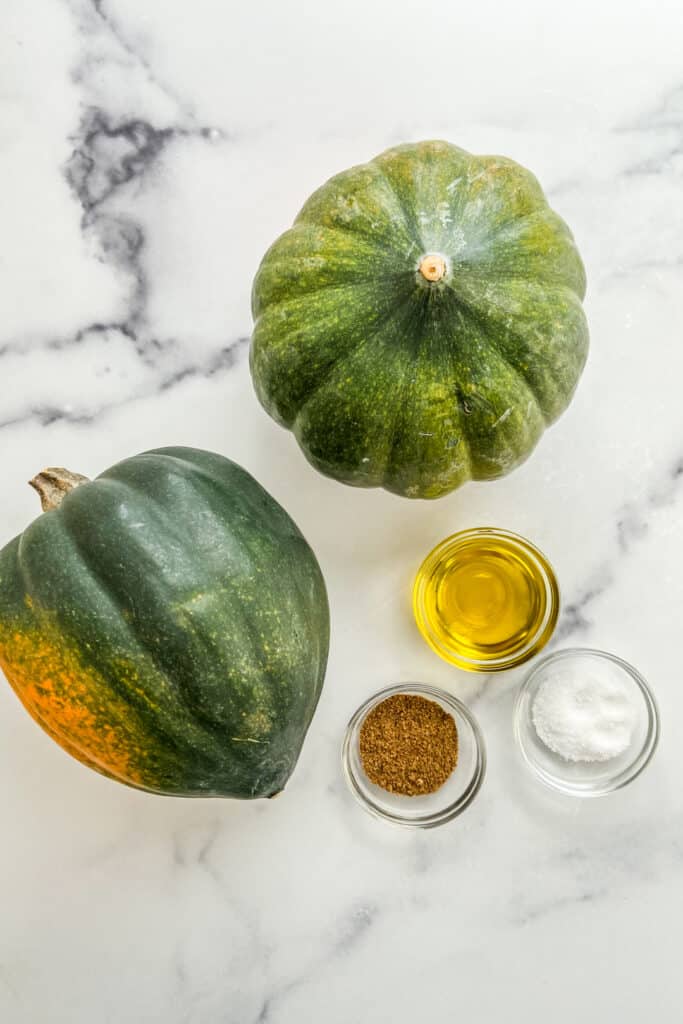
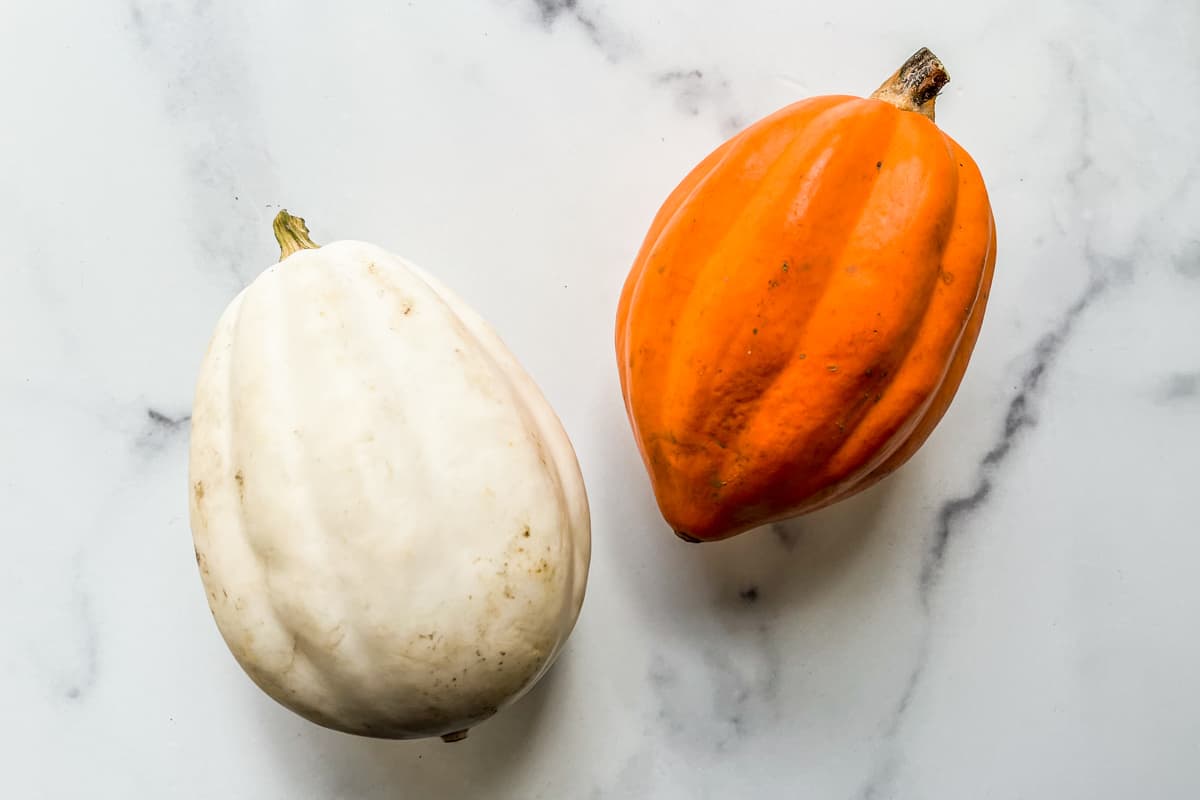
Acorn Squash
Acorn squash is one of the winter squash types you will likely see in boxes when you enter your grocery store in the fall. It's typically a deep green-skinned squash variety that resembles the shape of an acorn. However, heirloom acorn squash can sometimes be white or orange.
Acorn squash have noticeable exterior ridges and may have a splotch of bright orange on their skin and a rich, yellow-orange flesh that's great for roasting.
They're mild, slightly sweet, and nutty-flavored. Acorn squash are an excellent shape for stuffing and are often filled with mixtures of rice, quinoa, meat, spices, dried fruit, or nuts and served as a beautiful and delicious side dish.
Acorn squash is also delicious when roasted with maple syrup or brown sugar and served as a sweet side dish or on top of a salad.
Try one of these tasty acorn squash recipes:
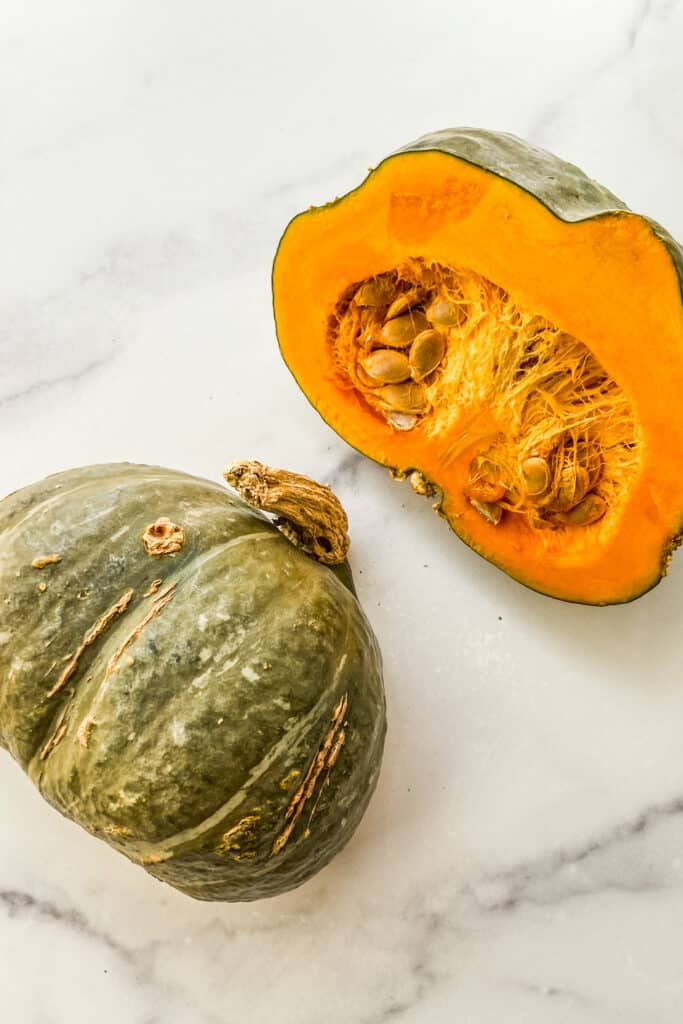
Kabocha Squash
Kabocha squash is a type of Japanese pumpkin. They'll either have dark green, bumpy skin (like the photo above) or bright orange thick skin.
Kabocha squash tastes like a cross between pumpkin and sweet potatoes - it has a sweeter flavor than many other winter squash varieties.
Kabocha can be roasted or steamed, and the skin is edible. It's often used in Japanese curry.
Here's a delicious braised kabocha squash recipe you can try.
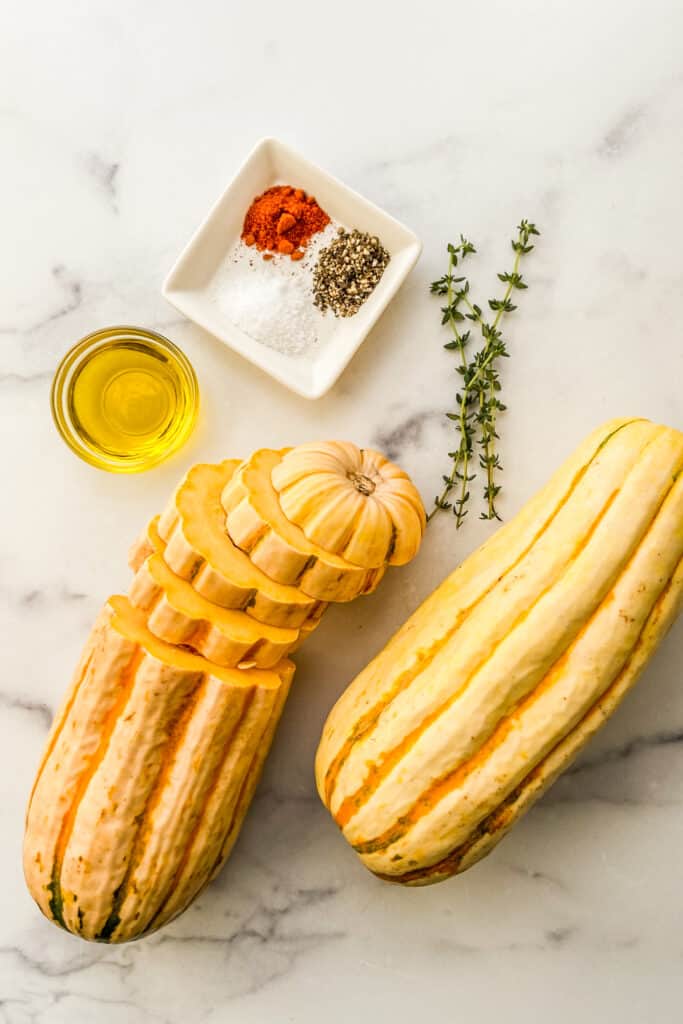
Delicata Squash
Delicata squash are cream-colored (with splashes of orange and green) cylindrical squash with delicate, thin skin. You may see them with orange or green stripes.
They're also called peanut squash, sweet potato squash, and Bohemian squash.
Delicata squash is often sliced into rounds or half-moons and roasted. The seeds can be scooped out, and they can be stuffed with rice or meat.
Try this roasted delicata squash as a side dish or this salad with roasted delicata squash and grapes to impress your guests.
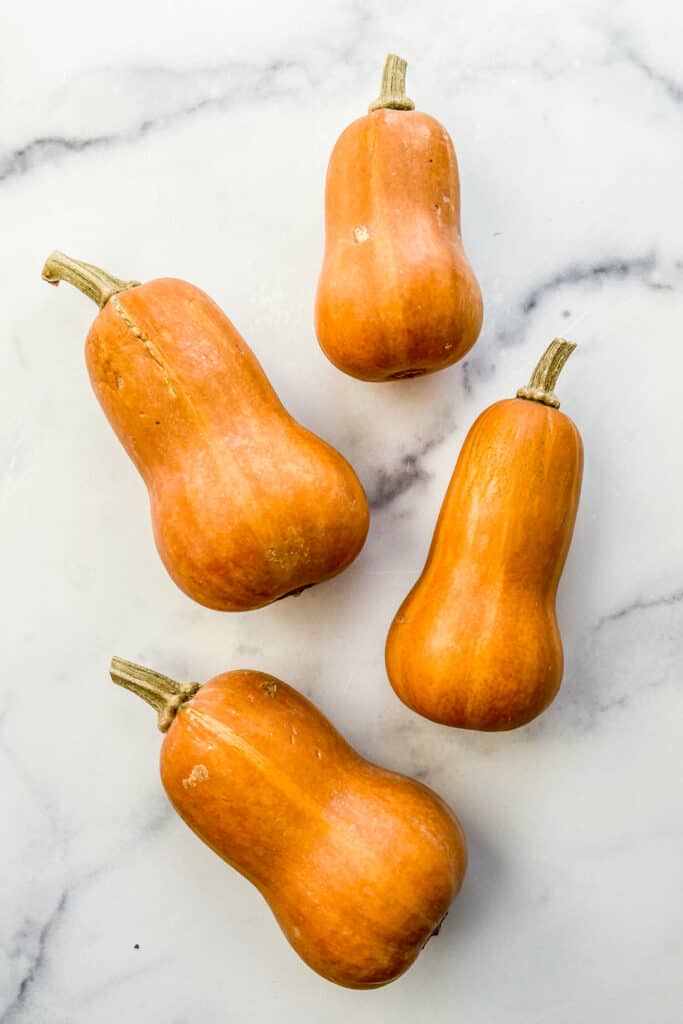
Honeynut Squash
Honeynut squash is a blend of butternut and buttercup squash created in the 1980s. It reached the mainstream market in 2015.
It's a similar shape to butternut squash but much smaller and with a more golden-orange skin. It's incredibly sweet and has three times more beta-carotene than butternut squash.
Honeynut squash is excellent for roasting or stuffing, but it's also sweet enough to be used in a pie.
Make this roasted honeynut squash with miso maple butter for a real treat!
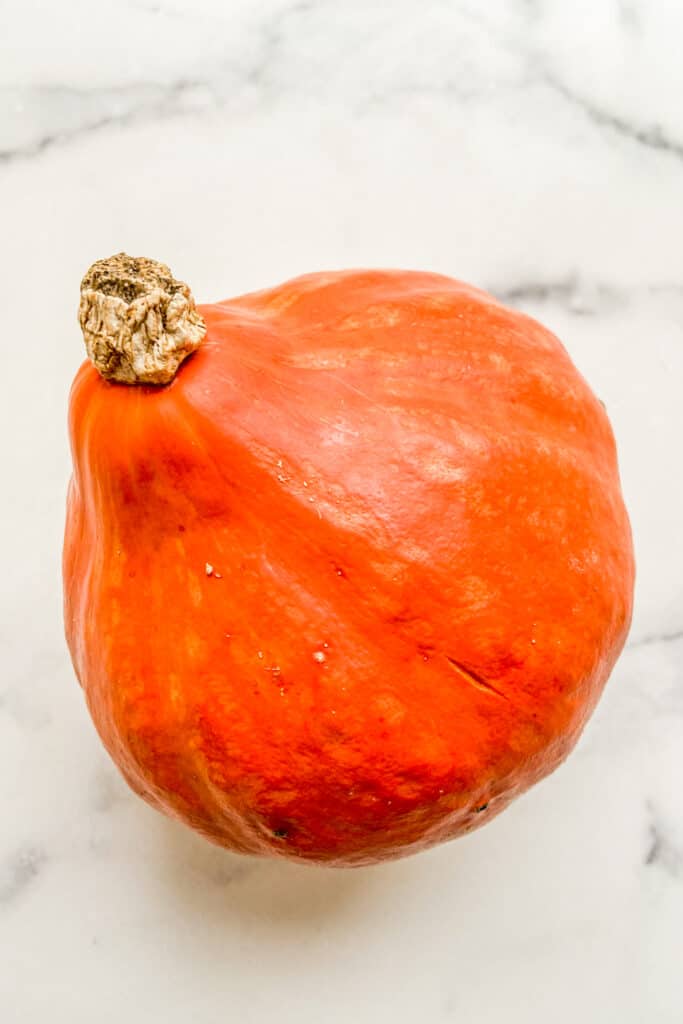
Red Kuri Squash
Red kuri squash is a small, pumpkin-shaped squash with orange skin and creamy, yellow flesh. It has a delicate chestnut flavor.
It's a type of Hubbard squash, although it's not as mealy as regular Hubbard squash.
It's great in baked goods, roasted and served on a salad, or blended into a soup.
They're slightly difficult to peel, so it's recommended that you cook them with the skin on and scrape out the flesh after baking, roasting, or steaming.
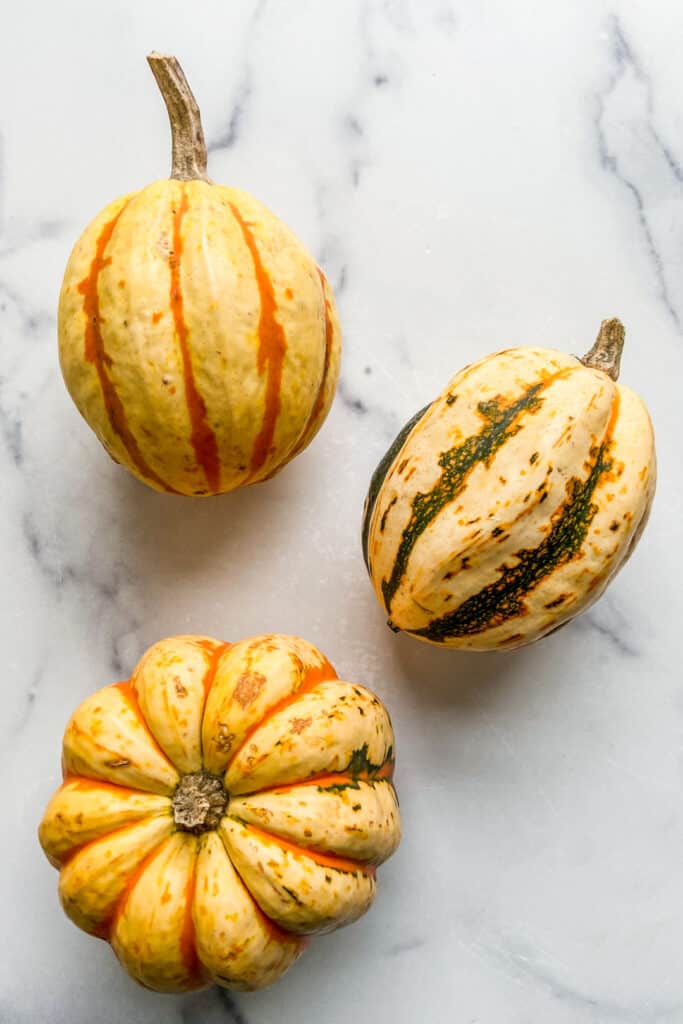
Carnival Squash
Carnival squash is a hybrid of acorn and sweet dumpling squash. It has bright, colorful skin and rich, sweet flesh.
Carnival squash tastes similar to butternut squash but slightly sweeter.
It has maple, butter, and nutty undertones - making it excellent in salads, soups, or roasted as a side dish.
Carnival squash skin is edible, but you can roast the squash and scoop the flesh out of the skin as well. The skin will become papery when roasted.
Try this roasted carnival squash with feta and pomegranate seeds for an easy, delicious side dish.
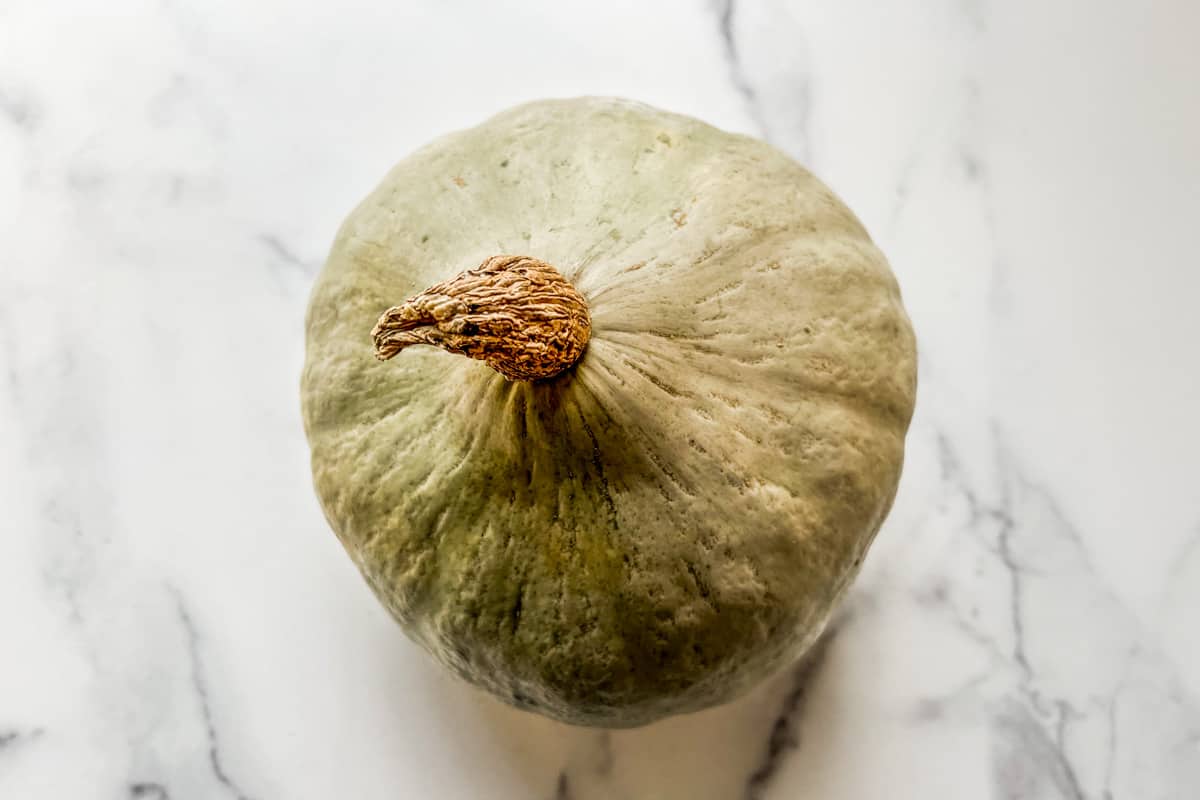
Hubbard Squash
These large squash come in various beautiful colors like light green, light blue, yellow, and orange.
While originally from the Caribbean, they're named after one of the first farmers to grow squash in the US.
Hubbard squash is sweet but milder in flavor and more grainy than butternut squash.
Hubbard squash can be stored for up to 5 months and become sweeter and less grainy over time - so it may be worth storing them for a few months!
They have thick, bumpy skin (which I don't recommend eating). Hubbard squash is best in soups and mashes.
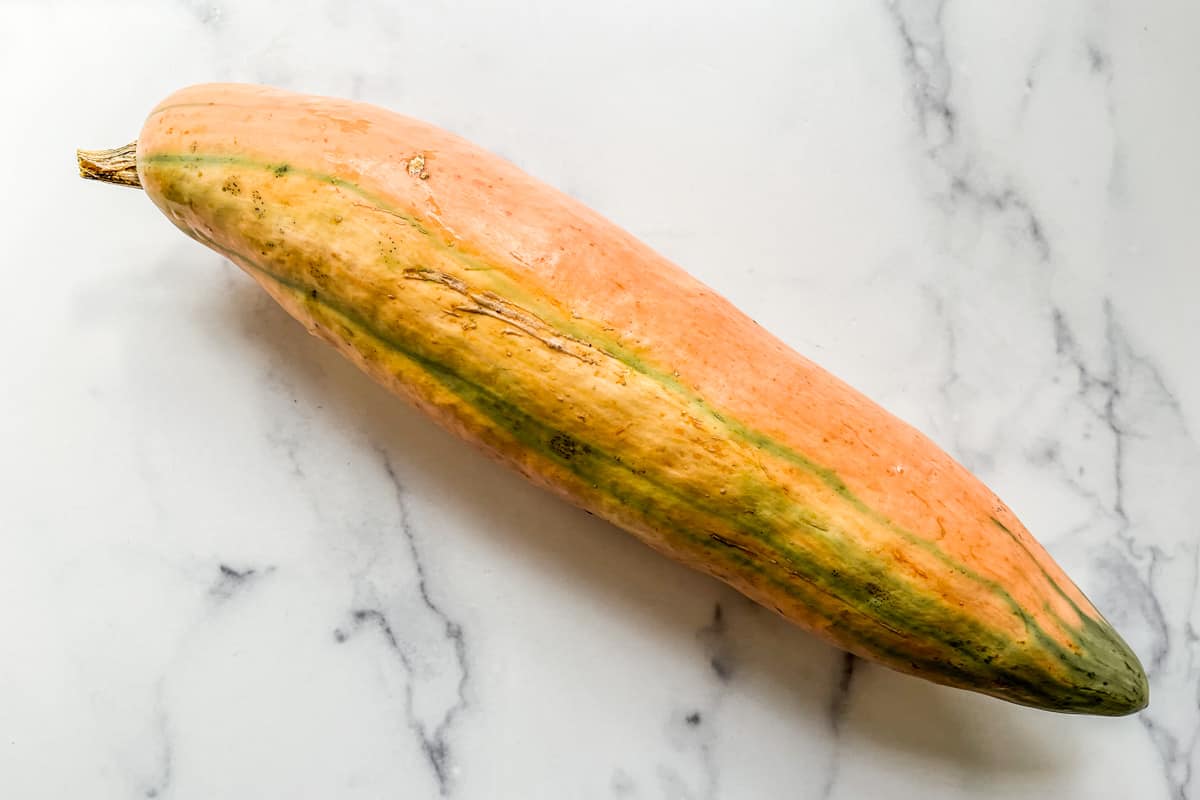
Candy Roaster Squash
These large squash live up to their name - they're incredibly sweet when roasted!
Candy roaster squash is an heirloom squash originally bred by the Cherokee nation in the 1800s. It's most commonly found in the Southeast United States, but you might get lucky and find it at your farmer's market.
Candy Roaster squash can grow up to 15 pounds! They're great for pies and other baked goods.
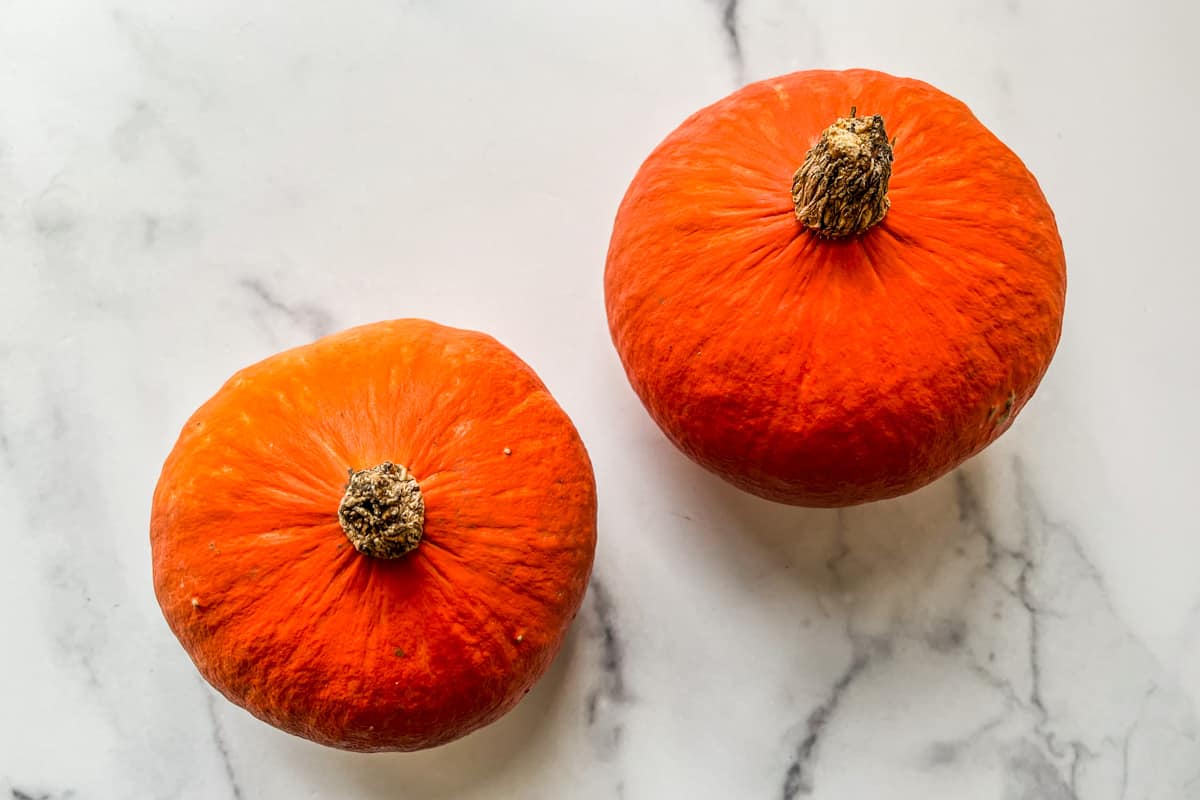
Sun Spot Squash
Sun Spot squash are a cultivar of buttercup squash and are slightly smaller than a typical buttercup squash.
They look like small pumpkins or kabocha squash. They have a drier flesh but lots of great squash flavor.
They're good in curries, soups, or roasted. And you generally use a sunspot squash the same way you would use a sweet potato.
Winter Squash Types FAQs
When are winter squash in season?
Many types of common winter squash are available year-round, but they are at their peak in November and December.
Personally, I like to enjoy winter squashes from mid-fall through winter.
How long will squash keep?
Whole squash will keep for a surprisingly long time when stored in a cool, dry place. Uncooked, whole winter squash will keep for 1 to 3 months in a root cellar or refrigerator.
If the squash is cut or cooked, it will keep for 2 to 5 days in the refrigerator depending on the variety.
What's the best way to cook squash?
There are so many ways to cook squash but one of the best is to roast them. You can roast all types of winter squash by halving them, scooping out the seeds, rubbing them with a little olive oil, and baking them on a sheet pan for 40 to 60 minutes at 400 degrees F.
How to tell if a squash has gone bad?
The easiest way to tell if squash has gone bad is to check for any soft spots, cracks, or bruising.
A squash past its prime that has dried out will be very light for its size. There might be obvious cracks in the skin, and when you cut it open the skin will be dry.
A rotting squash will have soft spots and discoloration of its skin and flesh.
Which squash have edible skin?
All squash skin is technically edible. However, some squash have better tasting skin than others.
Delicata skin is the lightest and least noticeable to consume. Honeynut and kabocha skin also taste good.
The next time you see a squash you haven't tried before, grab it and experiment! Winter squash is truly the best kind of squash, and with so many different varieties so easily available, it's a great time to play with different recipes. If you aren't sure where to start, roast the squash to get a taste of the flavor.
Squash Recipes
If you need inspiration, here are some wonderful squash recipes that won't disappoint!
Roasted Acorn Squash Soup - a creamy soup with all the fall flavors, including apple, spices, and herbs.
Butternut Squash Feta Pasta - you can't go wrong with a cheesy pasta recipe. And this one is delicious and comes together fast for an easy weeknight meal.
Braised Kabocha Squash - with soy sauce, mirin, a little sugar, and a little dashi, this sweet and savory squash is perfect for rice bowls and can be made in advance.
Roasted Delicata Squash - this is one of the easiest side dishes to make, and it's one of the prettiest. When sliced, the natural curves in the squash add a beautiful look to the table. You can use this recipe on top of salads, as a side dish, or blend it up and use it in a soup.
What's your favorite squash? Let us know below!





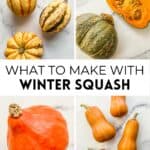
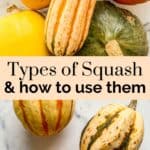
Leave a Reply